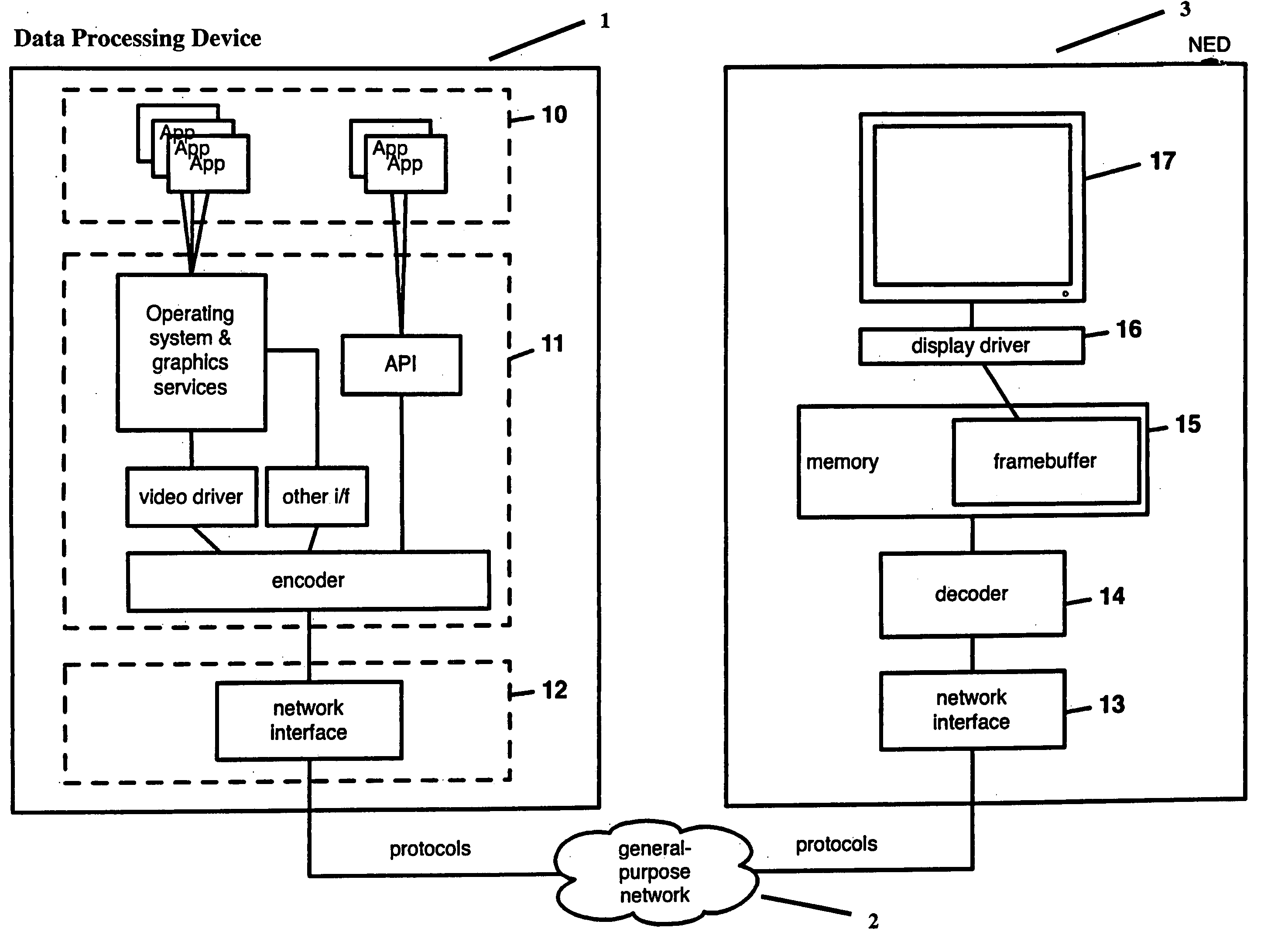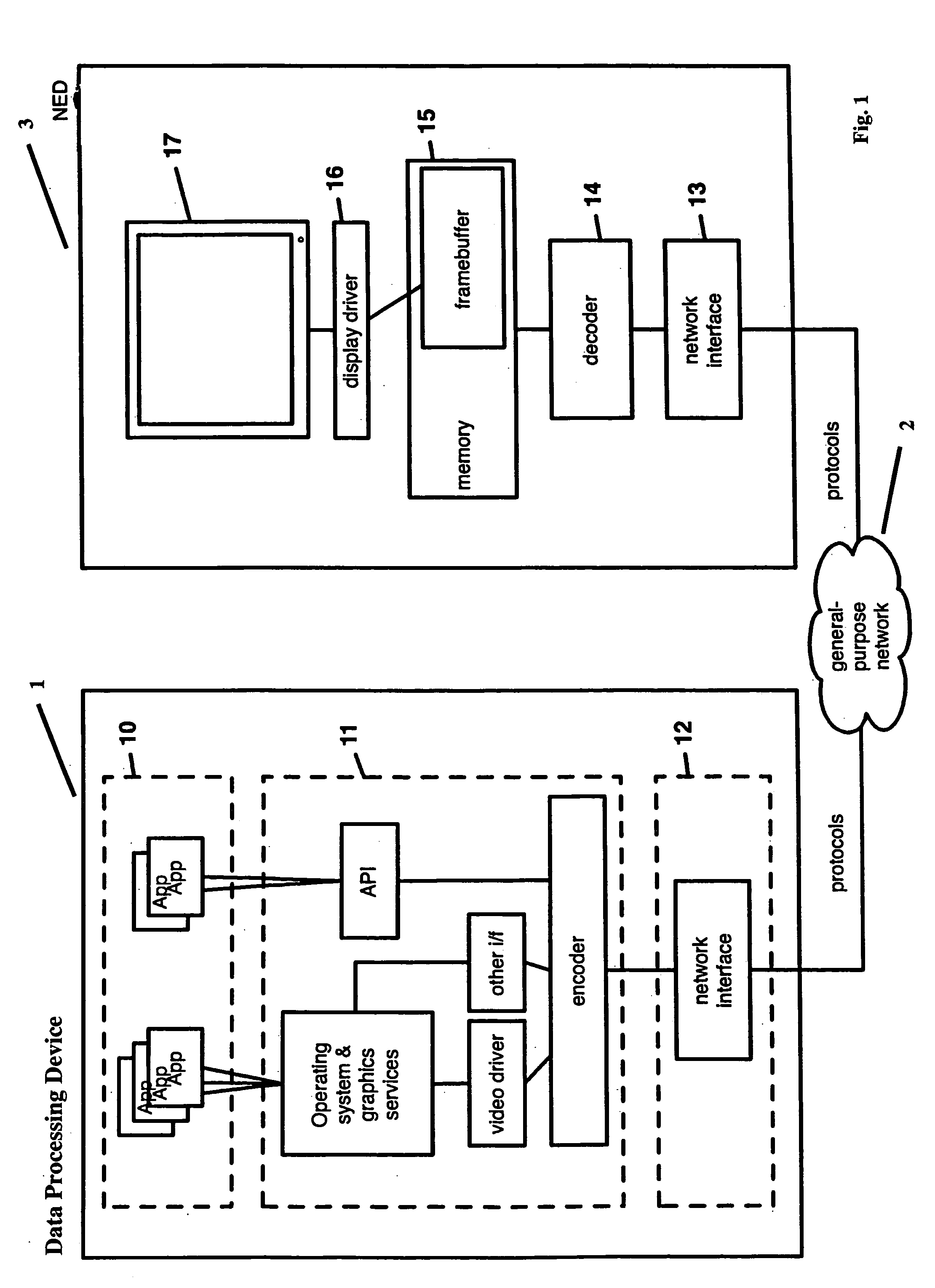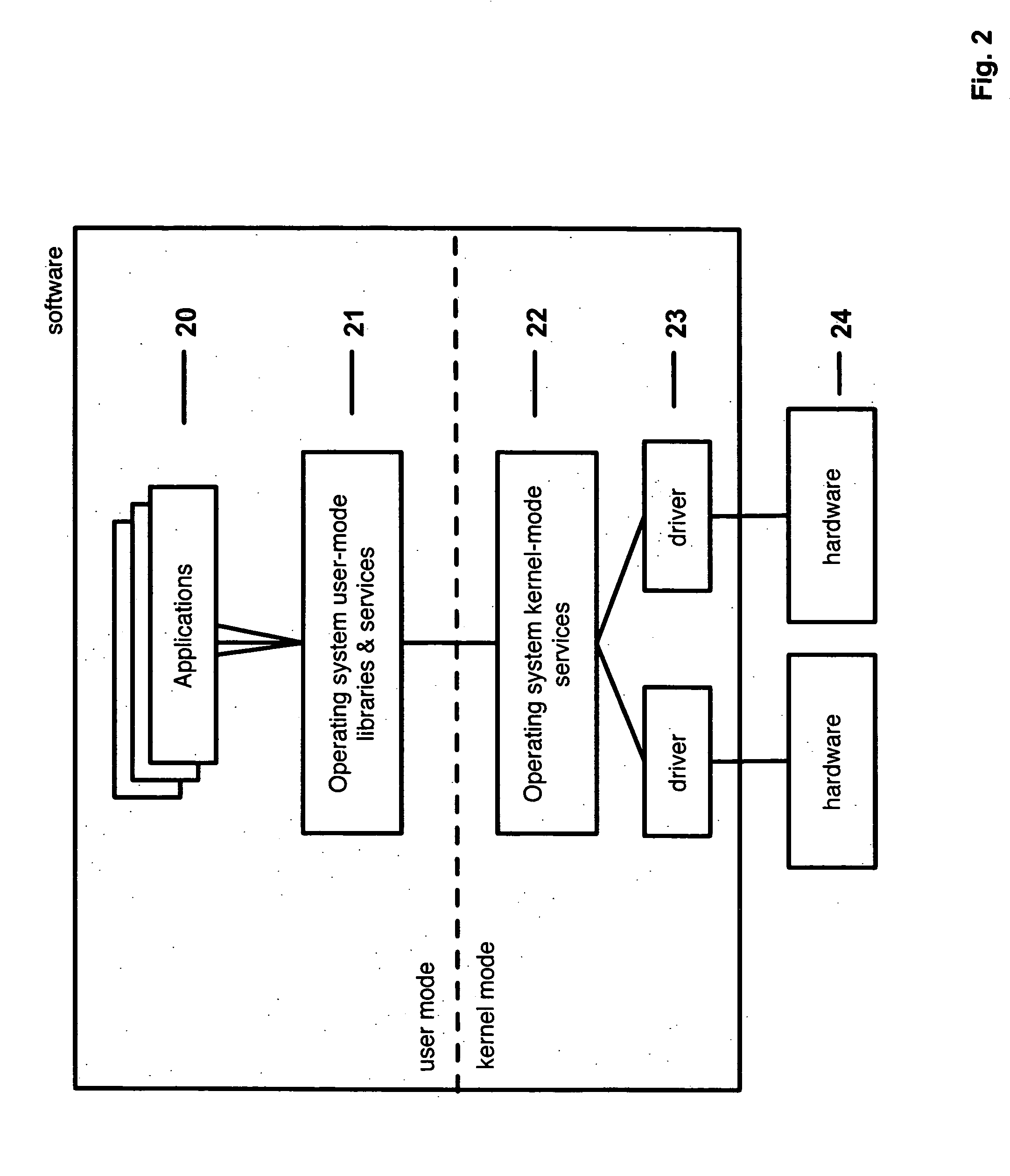Computer network architecture and method of providing display data
a computer network and display data technology, applied in data switching networks, instruments, program control, etc., can solve the problems of difficult to connect more than one monitor to a computer, difficult to share monitors between more than one computer, heavy weight and fragile cathode ray tube display, etc., to achieve convenient replacement and optimise the end-to-end system
- Summary
- Abstract
- Description
- Claims
- Application Information
AI Technical Summary
Benefits of technology
Problems solved by technology
Method used
Image
Examples
Embodiment Construction
[0055] Referring to FIG. 1, a system in accordance with an embodiment of the present invention has a data processing device 1 (such as a personal computer, laptop or PDA) from which image data is transferred and a display device 3 connected to the data processing device 1 over a network 2. A display device 3 of this sort will hereinafter be referred to as a network enabled display (NED 3).
[0056]FIG. 1 shows a data processing device 1 running applications 10, software and / or hardware components 11 for converting graphical data and a network interface 12. The NED 3 includes a network interface 13, a decoder 14, a memory 15 and display driver 16, as well as a display screen 17.
[0057] A recent trend in the field of electronics devices has been the introduction of a new class of very simple network-connected devices, sometimes referred to as ‘ultra-thin devices’ or ‘ultra-thin clients’. The name comes from a comparison with more traditional networked devices—computers or large peripher...
PUM
 Login to View More
Login to View More Abstract
Description
Claims
Application Information
 Login to View More
Login to View More - R&D
- Intellectual Property
- Life Sciences
- Materials
- Tech Scout
- Unparalleled Data Quality
- Higher Quality Content
- 60% Fewer Hallucinations
Browse by: Latest US Patents, China's latest patents, Technical Efficacy Thesaurus, Application Domain, Technology Topic, Popular Technical Reports.
© 2025 PatSnap. All rights reserved.Legal|Privacy policy|Modern Slavery Act Transparency Statement|Sitemap|About US| Contact US: help@patsnap.com



